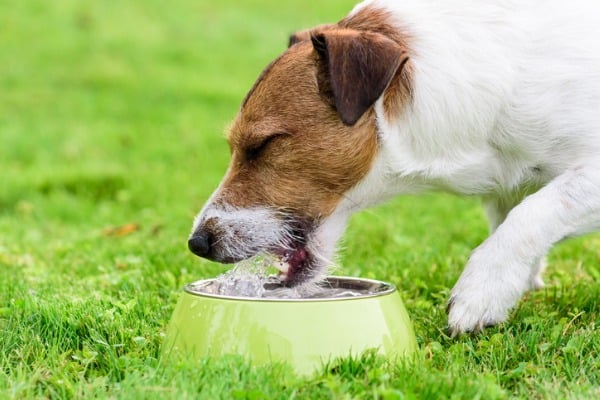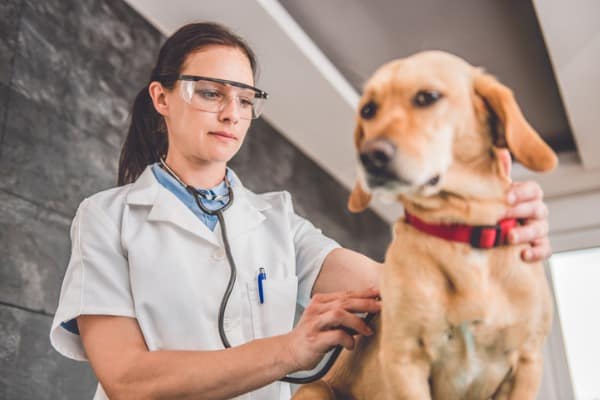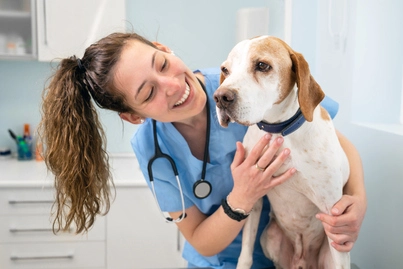Dog parents might be concerned if they notice something unusual about their fur baby’s bathroom habits.

Pets don’t use the toilet, and that can make it challenging to keep an eye on changes in their urine.
Many pet parents still keep a close watch for things that might be out of the ordinary.
So what is a dog mother or father to think when their dog’s pee is foamy?
Try not to panic:
Not understanding the reason for it can cause stress and worry – especially since your dog can’t tell you if something is bothering them.
See also:
- Dog Peed on My Bed in Front of Me: Here’s What You Can Do
- Urine Scald in Dogs: 5 Best Treatments
- Dog Drinking Own Urine: 5 Causes and How to Stop It
- Foamy Dog Urine: Are Your Pooch’s Pee Bubbles Okay or Not?
Should you be worried if your dog’s pee is foamy? Good news – there are several benign explanations.
Just like with people, sudden changes can be a good reason to take note of any other symptoms.
When it comes to the pee-pee stuff, this could include your dog not wanting to pee outside, or you find the presence of mucus in your dog’s urine.
There are many possibilities:
If your dog has foamy urine, it can be anything from the weather to their diet.
We’ll go deeper into the causes and what you can do.
Connect with a verified veterinarian in minutes. No waiting for appointments or office hours. No high fees. Your pet's health made convenient and worry-free.
Excess Protein in the Urine
This condition is known as proteinuria. It can be caused by several things, such as high protein levels in the diet, hard exercise, or something serious like chronic kidney disease.
When proteinuria occurs, the kidneys aren’t filtering out proteins like they normally would. The result can be foamy urine or a jelly substance in the urine.
Why does this cause foamy urine?
The protein in the urine can reduce surface tension, giving the urine an appearance of soapy or bubbly water.
Additional symptoms depend on the underlying condition.
Glomerular Disease

Also known as kidney disease, this condition can be diagnosed on its own or as a complication of another illness.
It depends on genetics:
Certain breeds are more at risk of developing glomerular disease.
It can be a complication of diabetes, parasites, Lyme disease, or cancer, among others.
If you’re worried your dog’s foamy urine is related to kidney disease, there are some other things to look out for.
A dog not eating or drinking and lying around, increased thirst, weight loss, and vomiting are additional warning signs that need to be checked out by a vet.
Dietary Causes
A dog who is getting far too much protein in their meals might have proteinuria.
The high amounts of protein become too much for their kidneys to keep up with.
Strenuous exercise can also cause muscle cells to break down and enter the bloodstream, where the kidneys face a similar challenge straining out the extra protein.
A vet can evaluate if either of these things is causing foamy urine in your dog.
If this is the case, simple lifestyle changes are usually enough to remedy the issue.
Acute Kidney Injury
Injury, ingestion of toxic substances like antifreeze, and infections can lead to acute kidney injury – or AKI.
This is a serious condition, and if you suspect your dog is suffering from it, an emergency trip to the vet is in order.
Here’s a video that explains the signs to look out for.
Foamy urine can be a symptom, but your dog will also likely present other indicators such as weakness, disorientation, vomiting, and refusing food or water.
Some medications, such as NSAIDs, can cause this medical emergency – especially if ingested in large amounts.
The moment you realize your dog has gotten into your painkillers, you should get them to a vet’s office.
Natural Causes

If you suspect your dog has foamy urine, you should take a closer look – is their urine coming out foamy, or only looks that way once it hits the ground?
If the latter is the case, temperatures could be to blame.
Particularly hot or cold temperatures can cause urine to foam when it comes into contact with soil, lawns, pavement, sand, or other outdoor surfaces.
You should also take note of the speed at which your dog pees.
If they’re peeing a lot and quickly, the urine could foam because of the force of it hitting the ground.
Dogs that have recently had a lot of water, had to hold their pee, or both, could be peeing so fast their urine is foaming as soon as it makes contact with a surface.
It might be awkward to think about, but you’ve probably noticed a similar effect in the toilet when you’ve held your bladder too long.
Infection

Foamy urine that is also smelly or discolored, such as darker urine could indicate an infection.
Whether the infection is in the urinary tract or in the bladder, a vet is the only person who can pinpoint the source.
The signs?
If your dog is urinating a small amount but seems to need to be let outside often, it could indicate infection.
Traces of blood in the urine and straining are additional symptoms you should report to your vet.
Also, if you notice your dog smells like urine or has issues with leaking urine while lying down, definitely take note and share it with the doggy doc.
Medication Side-Effects
Certain types of antibiotics, as well as steroids, can cause foamy urine in dogs.
If your dog is on any prescriptions, your vet should discuss with you any side effects you might see.
When to get professional advice?
You should also let your vet know if you suspect their foamy urine is a result of medication.
They can advise you if there’s cause to evaluate it further or if it’s nothing to be concerned about.
Preventing Issues

Chronic kidney disease isn’t something pet owners can control.
They can, however, lower the risk that their dog will develop this serious condition.
Administering regular anti-parasite medication will prevent things like heartworms, which can lead to kidney disease.
Anti-parasite medications geared towards repelling ticks can keep Lyme disease off of the table.
Dog-safe bug sprays also give an added layer of armor against ticks that carry blood-borne illnesses.
A word of caution:
Bug repellents for humans often contain DEET, which is dangerous for dogs.
It’s a safer bet to buy a bug spray made for dogs from a pet store or a vet.
Don’t rely solely on bug sprays and thick fur to keep the pests off of your dog.
Bug sprays are best when used in conjunction with an anti-parasite prevention pill.
Other possibilities?
Pancreatitis and diabetes are two conditions that can also result in chronic kidney disease.
The best thing you can do to lower your dog’s risk of either of these diseases is to keep them at a healthy weight.
You love feeding and spoiling your dog; we all do.
Too much food or fatty treats can cause them to gain an unhealthy amount of weight, which will wreak havoc on their overall health.
Introduce a healthier diet slowly. You’ll notice your dog loses weight while still eating.
Here’s what else:
Avoid letting them pick garbage and resist the urge to share table scraps.
Be wary of dog foods that are high in fat – just because they’re made for dogs doesn’t mean they’re healthy.
There is such a thing as “junk” dog food – reading the labels before buying is an easy way to be confident that your dog’s food is good for them.
As for avoiding infections?
When bladder infections or UTIs are caused by bacteria entering the urinary tract, you might need to start helping your dog with their hygiene.
Antibacterial wipes for dogs are an effective way to keep them clean, especially around the urethral opening.
Long-haired dogs can have more nasty bacteria hanging around that area, so bathing them more often or clipping their hair can reduce the risk.
Because of their anatomy, female dogs have a higher risk of developing a UTI.
It’s especially important to keep their sensitive areas clean.
Always make sure your dog is properly hydrated. It’s among the best lines of defense against bad bacterial colonies setting up in your dog’s urinary tract.
Sometimes, bladder infections are the result of bladder stones or urine crystals.
Diet changes can resolve these issues, as can supplements that discourage stones from forming.
Consider urinary care dog food as appropriate for problems specifically identified.
Urine crystals can only be identified in the vet’s office, where you will get recommendations about how dietary adjustments can help your dog.
To avoid acute kidney injuries, keep all harmful medications, foods, and plants away from your dog’s reach.
If you’re a houseplant lover, it’s best to keep around flora that won’t harm your dog if they decide to chow down on them.
Even if the only medication you have in the house is for your dog, be sure to secure them somewhere out of reach.
Getting into a whole bottle of any kind of pills could mean a very scary, very expensive trip to the vet.
Don’t Panic

Dog pee that’s foamy has a lot of explanations that don’t include serious medical issues.
Before you call the vet, try and verify that their pee is actually coming out of their body foamy.
Pee that foams on the ground can be attributed to the weather or simply your dog emptying their full bladder quickly.
As for those scary conditions we talked about?
It’s true that foamy urine can be a symptom of serious things.
But paying attention to changes in your dog’s urine can help you and your vet catch these issues sooner rather than later.
Don’t worry – watching your dog pee isn’t weird or a sign of helicopter pet parenting.
It’s part of staying on top of their health – something loving pet parents won’t mind a bit.

